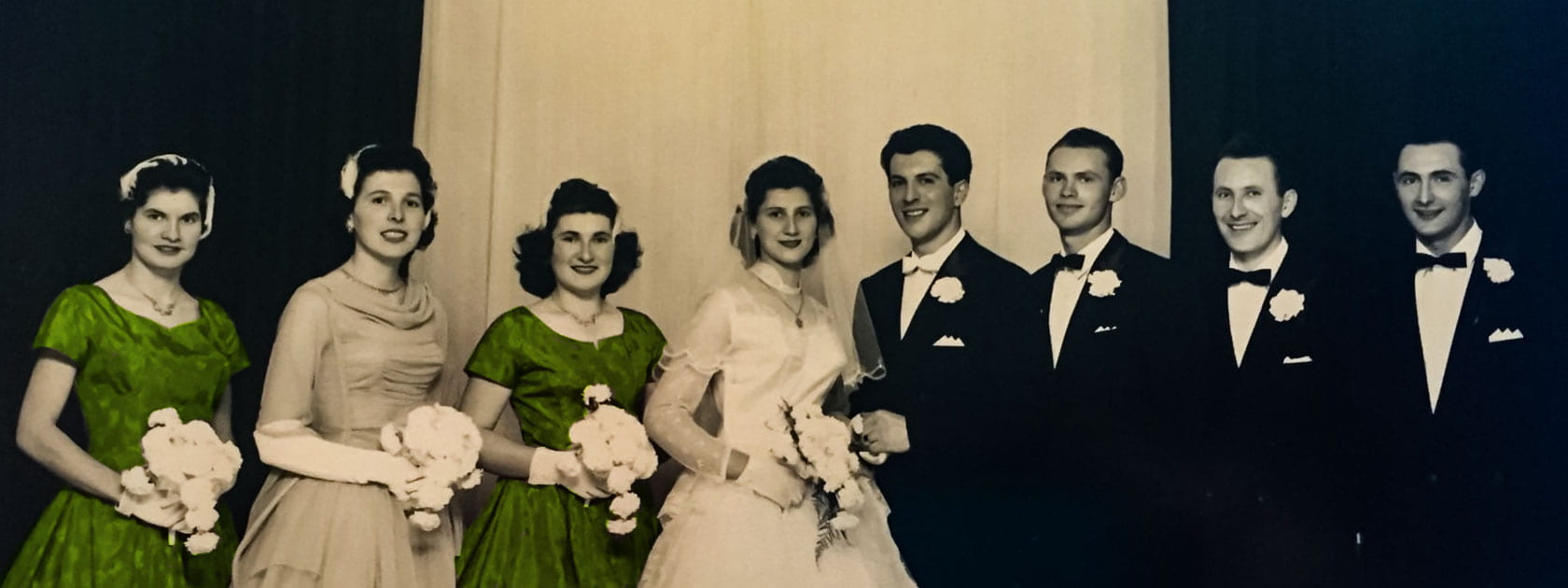Written by Josephine Calcagni

Table of Contents
Introduction
On Saturday, October 11, 2025, I conducted a semi-structural interview with my nonno, Giuseppe Sorrenti, at his home in Hamilton, Ontario. The purpose of the interview was to create an oral history and document a personal archive through recording Giuseppe’s firsthand testimony of his immigration journey from Italy to Canada and the life he built for himself in Hamilton, Ontario. The methodical tools that I used to guide this interview consisted of obtaining Giuseppe’s consent to participate in the process, nine interview questions that were approved by the University of Guelph along with various follow-up questions that I personally drafted, a video recording of Giuseppe’s immigration experience and images of his government documents. I am extremely grateful to have had the privilege of integrating my Nonno Giuseppe’s immigration journey into my academic studies as his insight enlightened me on the admirability and courageousness that defines my Italian heritage.
Interview
This interview was edited to remove long breaks in between sentences.
Summary of Interview
Below is a summary of the interview questions as well as Giuseppe’s responses.
Analysis
Throughout my interview with Giuseppe Sorrenti, he shared various points about his immigration story that relate to the primary source documents and material discussed within the HUMN*3800 course. Giuseppe outlined that one of the main reasons he left his hometown of Rosarno, Italy, to immigrate to Canada was for the plethora of opportunities that existed in North America that could potentially provide him with an overall greater quality of life. Professor Robert Harney argues that this belief was held by many Italian immigrants as the motif of the “search for opportunity” was a driving source of immigration (Harney pg. 6). This belief relates to Giuseppe’s immigration story as the day after he arrived in Kitimat, he immediately sought out an opportunity for work at Kitimat Construction where he worked 12–15-hour days. Giuseppe stated that once he arrived in Canada and began working, he quickly adapted to Canadian culture by getting his driver’s license and he learned how to speak English quickly, which were valuable skills to hold for jobs that were in demand (Harney, pg. 6). Giuseppe arrived in Canada in 1966, approximately 20-25 years after many Italian- Canadians were subject to internment due to the events of World War II (Zavaglia). He was luckily not impacted by any further discrimination following that period and he discussed in his interview how his transition into his new community was smooth. He found that Hamilton, Ontario, was a welcoming town, and he even attended multiple Italian clubs where Italian Canadians could congregate freely and partake in social activities together. Giuseppe enjoyed the various jobs that he held such as working for Kitimat construction, delivering bread for Pane Del Sole, partly owning Palermo Bakery and his job at Canron Building. He eventually had to leave his job at Canron Building after they tried to offer him a dangerous role where he was required to work with a large steel blade. Unfortunately, it was common for Italian immigrants to be assigned hazardous jobs that British and Scottish Canadians, as well as earlier Northern European immigrants, were unwilling to perform (Salvatore, 168).
Although Giuseppe’s immigration experience was similar to the Italian immigration stories that were discussed in the course readings, he presented various stark differences in the duration of his interview. Professor Russo discussed how many Italian immigrants were scrutinized for speaking Italian in public settings and work environments during the period of Italian internment that occurred in World War II (Russo). Giuseppe worked in Canada approximately 30-40 years after these discriminations took place, and he was never scrutinized by his superiors at work or in the public realm for speaking Italian. His experience exemplifies that prejudices against Italians from the 1940s ceased to exist in Hamilton during the 1960s, as he found the town to be very welcoming.
Reflection
The duration of the interview process with Giuseppe Sorrenti marked the first time that I had ever conducted an interview, and I found it to be an interesting and educational experience. Giuseppe was extremely cooperative and responded to my questions sufficiently. During the interview, I ensured that I was engaging with Giuseppe’s responses through statements such as “mm-hmm” and “that’s wonderful”, demonstrating to him that I was interested and attentively listening to the information he provided. I did not expect Giuseppe to have been able to recount the events of his immigration story in such detail as it occurred a long time ago and he was nervous about his English not being adequate. I ensured him that he should be very proud of his ability to speak English as well as he can, given that he immigrated here when he was 18 years old and it is his second language.
Going into the process, I was nervous that I would find it difficult to create follow-up questions according to Giuseppe’s responses, but he quickly made my fear disappear as his detailed responses presented various facts that I could further inquire about. Prior to the interview, I went over the questions with Giuseppe to ensure that they did not make him uncomfortable and he could briefly prepare his answers. I would utilize the same practice in the future as the interview went smoothly and Giuseppe was not caught off guard by the questions at any time. I learned through this process the importance of ensuring that the interviewee is comfortable with the questions being asked as well as the setting the interview occurs in.
Giuseppe’s accounts of his immigration story supported many of the arguments that authors like Robert Harney made about Italian immigration. Harney’s literature was educational and interesting to read, but hearing Giuseppe’s first-hand account of his immigration journey was an experience that I will never forget. I can conclude that conducting an interview is a very efficient method of obtaining a primary source that I will utilize in my future academics. It was truly inspiring to witness Giuseppe happily recounting the events of his past and be grateful for the life that he built himself. It was an emotional experience hearing him discuss the long boat ride that he had endured alone, at the young age of eighteen, on his way to a foreign country and how he had viewed it all as a positive experience, focusing on the fun memories he made on the boat as opposed to the challenges. I hope that this interview not only is used as a primary source on Italian immigration for future academics, but that it encourages immigrants to share their stories as they should be proud of all their accomplishments. After hearing Giuseppe’s story, it has motivated me to view the events that occur in my life with a positive lens, as I am blessed to live in a country that is comprised of opportunity and to have a wonderful family by my side, particularly the man that I am proudly named after, my Nonno Giuseppe.
Gallery
The following images are all from the private archive of Giuseppe Sorrenti.









Bibliography
Harney, R. F. (1988). Italian immigration and the frontiers of Western civilization. The Italian immigration experience (pg. 1-24).
Russo, T. (2025, September 22). Lecture and discussion on Italian Canadian immigration II and stereotypes. HUMN*3800: Italian heritage and digital applications. University of Guelph, Guelph, Ontario. Lecture.
Salvatore, F. (1998). Poems for Giovanni Caboto. J. Pivato ed. The anthology of Italian-Canadian writing (pg. 165-170). Guernica Editions Inc.
Zavaglia, N. (1997). Barbed wire and mandolins. National Film Board of Canada.
How to cite this page
Calcagni, Josephine. “Giuseppe Sorrenti: Journey from Rosarno, Italy to Hamilton, Ontario” In Italian Communities in Canada: Heritage, Cultural and Ethnographic Studies, suprv. Teresa Russo. University of Guelph, 6 November 2025, Guelph (https://www.italianheritage.ca/2025/11/06/giuseppe-sorrenti-journey-from-rosarno-italy-to-hamilton-ontario/). Italian- Canadian Narratives Showcase (ICNS), Sandra Parmegiani, Kyra Bates and Gurpreet Kaur.


